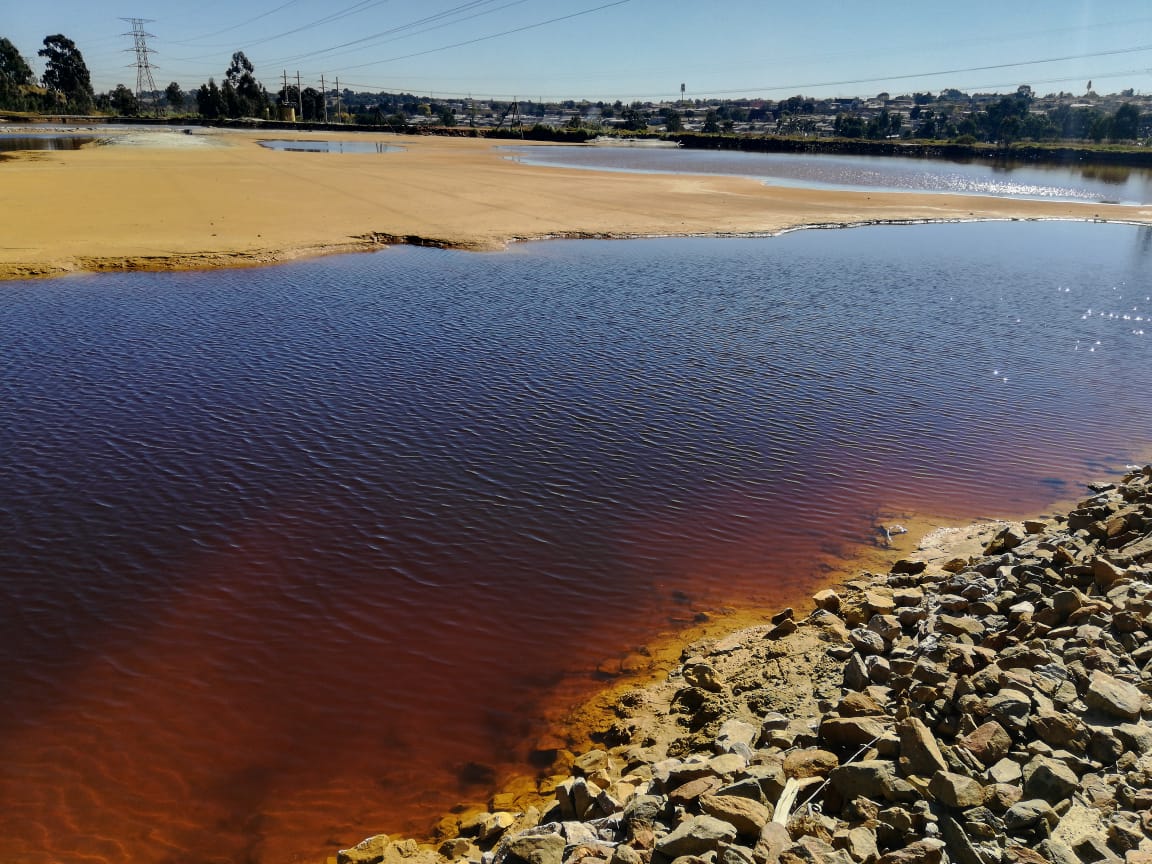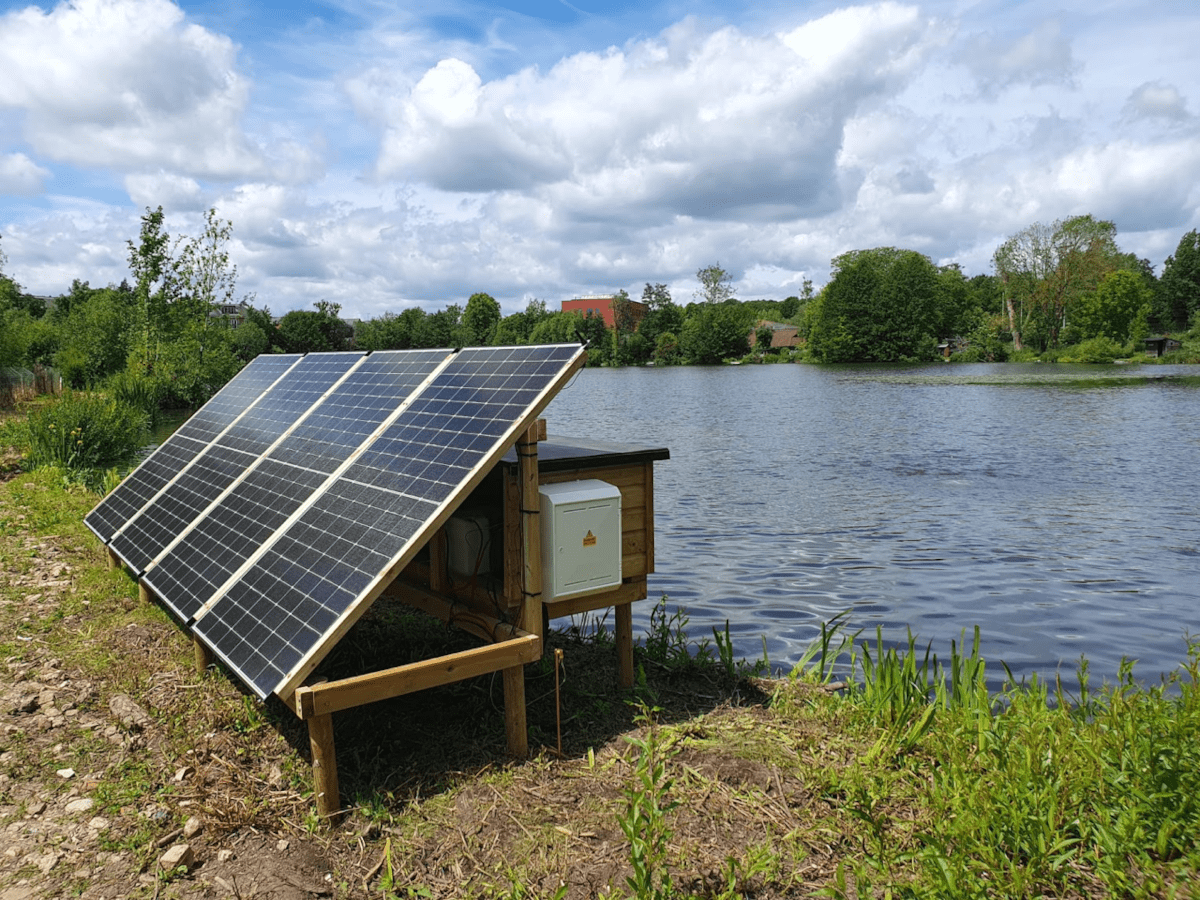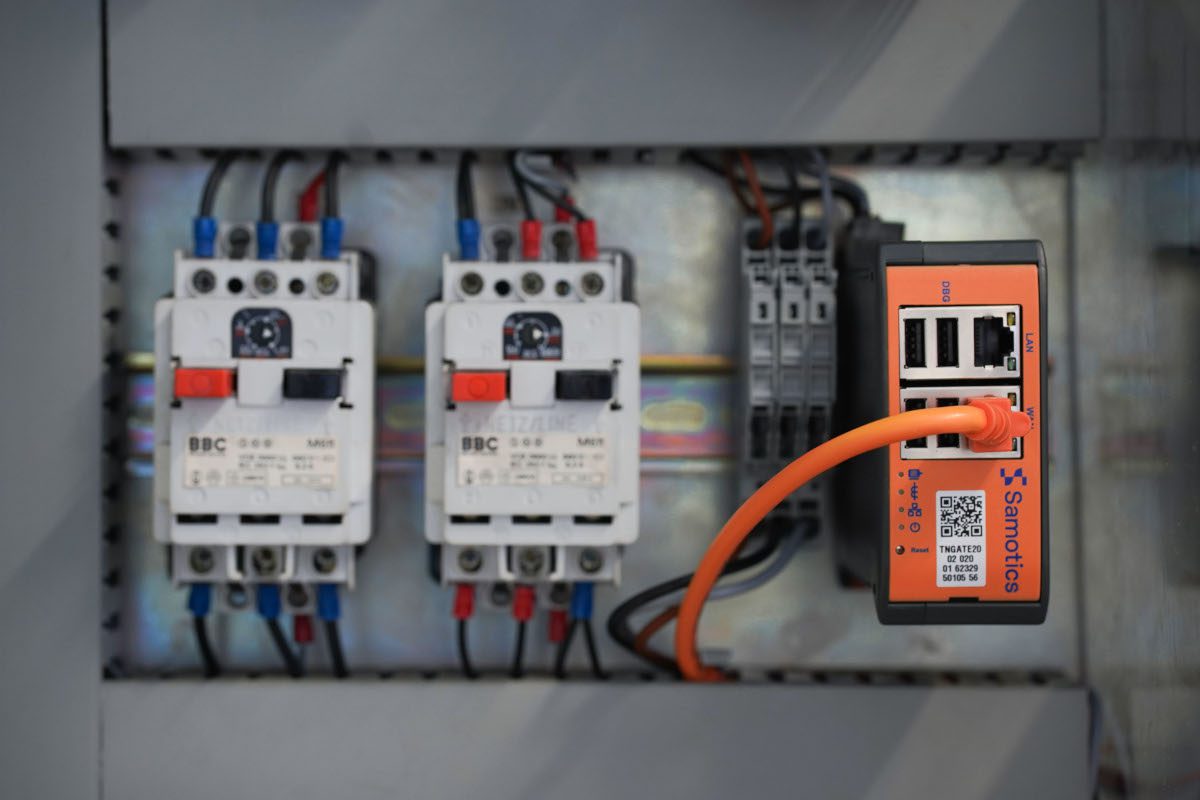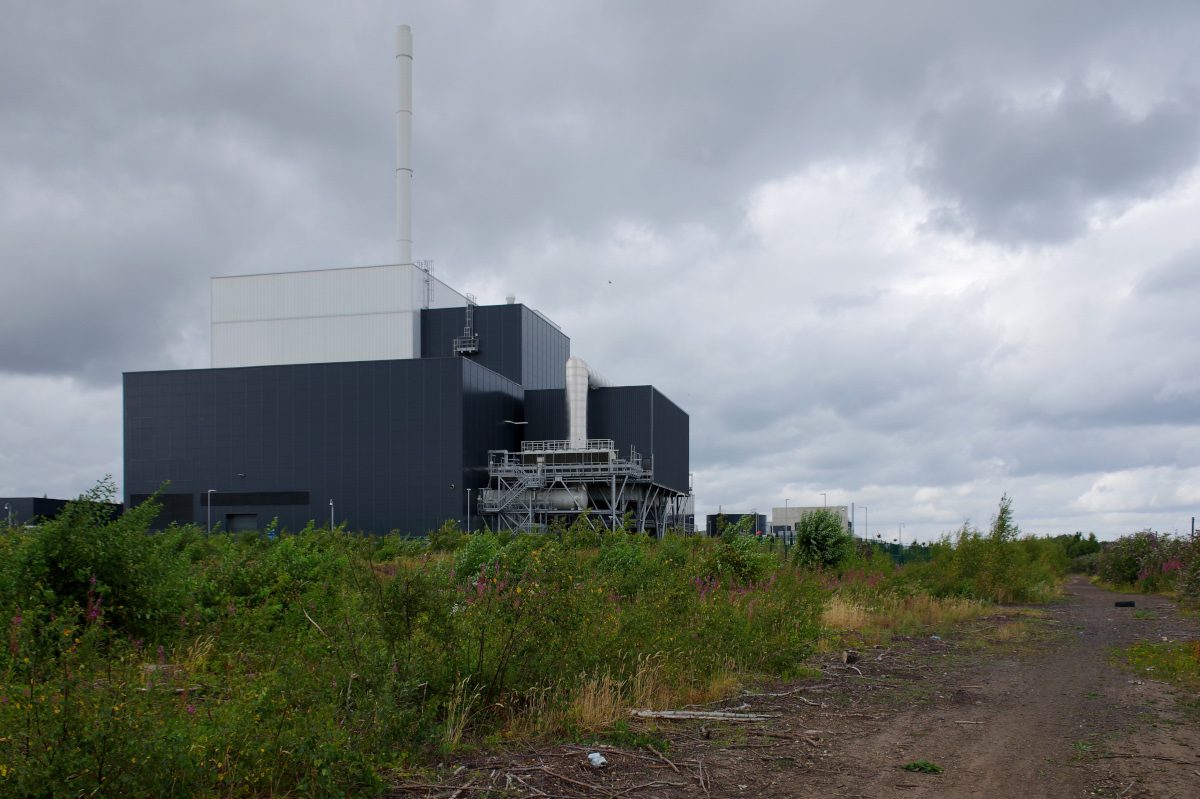The Loe Bar in Cornwall is a shingle and flint bank that separates the sea from Loe Pool, presenting an unusual set of challenges in both flood risk management and environmental protection. In the following article, Rob Rhyder from measurement technology and data management firm Nivus attempts to explain how a bespoke monitoring solution was developed for the Environment Agency (EA) to meet the specific requirements of this unique location.
Situated within an Area of Outstanding Natural Beauty (AONB) in Cornwall, Loe Pool is fed by the river Cober and a number of smaller streams. Both the pool and the bar are designated a Site of Special Scientific Interest (SSSI) due to their unique wildlife and habitat.
As the most southerly town on the island of Great Britain, Helston sits on the banks of the River Cober, upstream of Loe Pool, and has experienced significant flooding in the past. Loe Pool is Cornwall’s largest natural freshwater lake, protected by Loe Bar which is approximately half a mile in length. However, the bar is geographically remote and exposed to the ferocity of the Atlantic Ocean, so environmental monitoring equipment needs to be able to operate in harsh conditions, without mains power, and with limited communications connectivity.
Historically, Helston’s flood risk resulted from backing up in the Loe Pool and the River Cober, so alleviation measures primarily included the emergency creation of a relief channel in the bar. However, this was obviously a hazardous operation, so in the 1980s and engineered outflow was created in the form of a concrete pipe, installed to operate as an overflow for the pool. The pipe allowed excess water to drain from the pool through the bar, but was overwhelmed by river flows during high flow events. This necessitated expensive and invasive over-pumping operations that also had a significant lead-in time to bring all the equipment to such a remote site. In addition, as a result of high tides and extreme weather, the outfall of the pipe was largely blocked by sand and shingle, which had to be removed during periods of flood risk. This process was inefficient, costly and time-consuming, so a second engineered outfall was developed.
Engineered outflow solution
The second, more advanced outflow was built in 2020 to largely eliminate the requirement for over-pumping. The additional capacity provided by the second pipe meant that the pool drains by gravity rather than costly and carbon-intensive pumping operations. “The new outflow featured penstocks, pumps, flow monitors and remote communications, and was developed to provide a number of important advantages,” says Will Hancock, Project Lead at the EA.
Level and flow monitors were installed in the River Cober, the Loe Pool and in the new outfall pipe. “This provided us with the ability to monitor the site remotely,” Will explains, “which meant that less site visits were necessary, lowering project costs and carbon footprint, and enabling us to respond to flood risk in a faster and more timely manner.”
The new monitoring system was designed to detect the excessive accumulation of water in the pool, so that the second outflow could be implemented when necessary. Under such circumstances, an excavator is used to expose and open the outfall cover before the sluice gate is opened and the pumps are allowed to remove water from the pool, for discharge to the beach. Over the last 5 years, the second outfall has been opened on two occasions.
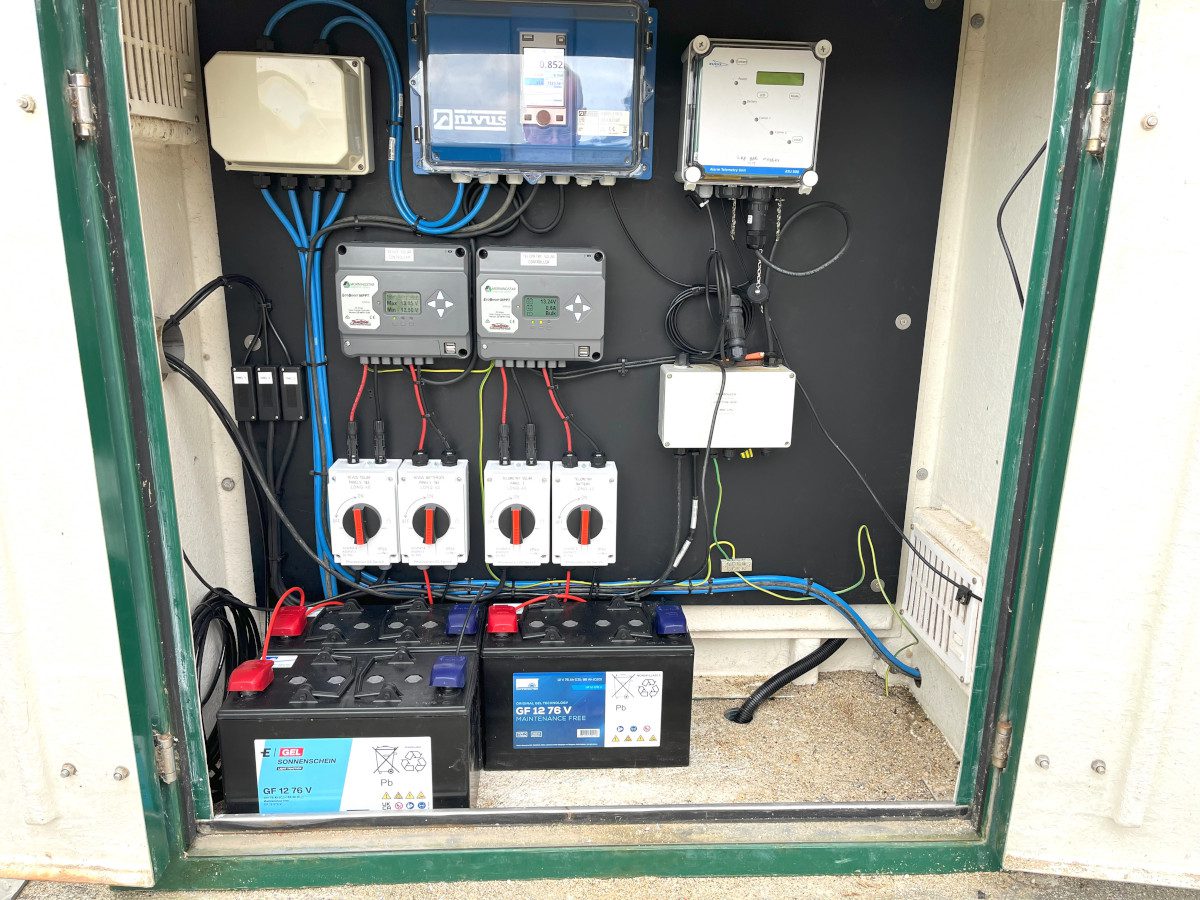
New flow monitoring technology
Prior to the installation of the new monitoring system from Nivus, flow was measured in Helston and in the discharge pipes with a traditional Doppler flow meter, and the failure of one of these units provided the EA with an opportunity to review and upgrade the monitors.
Explaining the evaluation process, Will Hancock says: “These measurement instruments perform a critically important function. Not only do they help manage the Loe Pool to lower flood risk, they also feed data into our flood forecasting model, so it was essential that we utilise accurate, reliable instrumentation.
The EA has extensive experience with flow measurement technologies, including the cross-correlation method from Nivus, so it was determined that this would be the appropriate solution for the discharge pipes and the river monitor. The key advantage to this area velocity flow measurement technique over the instruments which it replaced is that it provides a 3-dimensional flow profile that is calculated in real-time to provide reproducible and verifiable flow values in full or partially filled channels or pipes. Older Doppler methods are less accurate because they only measure 2-dimensional flow.
The method utilises particles, minerals or gas bubbles which act as reflectors within the water body. Reflections are saved as images or echo patterns, and compared with a further scan which is conducted a few milliseconds later. Velocity is determined by measuring the beam angle of the positions of unambiguously identifiable reflectors. The method produces highly accurate readings without the need for additional calibration.
Explaining the background to the decision to invest in a cross-correlation solution, Will says: “The Nivus equipment has been assessed by the EA, and we now run both fixed and portable versions of the technology. Nivus is also a Framework Partner, so the procedure for implementing this solution was relatively simple, despite the specific challenges that this site presented.”
Uniquely challenging environment at Loe Bar
As a remote location Loe Bar does not benefit from easy access to utilities, so it was necessary for the monitoring solution to be able to operate off-grid; solar/battery power was therefore adopted. The solution also needed to be sufficiently rugged to be unaffected by its proximity to the beach. “Nivus proposed a complete low-power solution, which calculated the power requirements and specified the solar generation capacity that would be necessary to ensure continuous monitoring in all weathers,” Will explains. “The solar panels were fitted at an angle to the sea, which was less ideal for power generation, but necessary to avoid potential damage from sand-blasting.”
Special low-power versions of the Nivus equipment were also deployed. For example, a Nivus NF750 transmitter employs low-power electronics, and consumption is minimised by setting the monitor to sleep, then wake up after 15 minutes to take a measurement, and then return to sleep mode.
For redundancy purposes, two Nivus CS2 bed-mounted, cross-correlation sensors were fitted in each of the discharge pipes, and the same dual-sensor redundancy arrangements were established in the river flow monitor at Helston, albeit in a cross-channel configuration.
The EA’s standard remote communication equipment was installed inside a kiosk along with the transmitter, a multiplexer, rechargeable batteries and a solar power regulator.
Access to the monitoring site is also limited. The closest that EA vehicles can access is 200m away, so any site visits would necessitate manual portability for any necessary equipment. Access to the monitoring locations within the pipes is also potentially hazardous – necessitating breathing apparatus and other PPE. Fortunately, therefore, the newly installed monitoring system does not require regular service or calibration.
Summary
Nivus installed the new monitoring system in March 2025, and Will says: “The performance to-date has been good – there have been no outages and there have been no requirements for a site visit. We performed manual checks on the monitors using a portable NivuFlow Stick and they are monitoring very accurately, representing a significant improvement on their predecessors. It is also comforting to know that we have the redundancy measures in place,” he adds.
Looking forward, Will says: “Given the importance of the Loe Bar as an ecological asset, and of flood management in Helston, we are delighted with the performance of the monitoring system, and will be applying for the Loe Pool and Bar to be recognised as a ‘Strategically Important Asset’.
“At the EA, we are accustomed to managing remote sites, but Loe Bar is probably one of our most challenging locations, so it has been gratifying to be able to establish a robust, reliable, and off-grid solution to meet the twin goals of environmental protection and flood risk reduction.”





